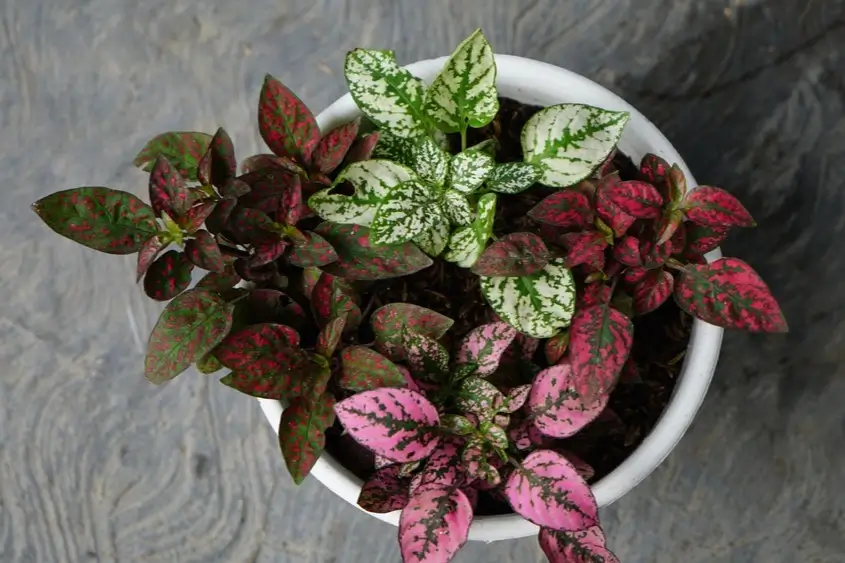Growing polka dot plants is fairly simple when provided with the right conditions. They exhibit a moderate growth rate, maintaining a compact size, especially when cultivated indoors as houseplants. Typically treated as annuals in outdoor settings due to their native warmth preference, they are not considered invasive in temperate climates but are deemed invasive in specific tropical regions like Australia and Hawaii.
Watering
Maintain consistent soil moisture by watering the plant once the top half-inch of soil has dried out. During the winter, reduce watering slightly, and resume regular watering in the spring when new growth becomes apparent.
Location
Keep the polka dot plant in a warm place with at least 50% humidity, bathrooms windows are perfect. Indoors, ideal lighting comes from east- or south-facing windows. Outdoors, choose a shaded location to prevent excessive light, which may fade the plant's variegation. They thrive at temperatures above 60°F (16°C), making them hardy only in USDA zones 10 and 11 outdoors. Move container plants outdoors in spring and back indoors before the first fall frost for overwintering.
Soil
Employ an organic, well-draining potting mix enriched with pumice or perlite for improved drainage. Maintain even soil moisture, adjusting watering in the winter and resuming in spring with new growth.

Fertilizing
For container plants, use organic houseplant fertilizer monthly during the warm season. In-ground planting benefits from mixing organic compost into the soil each spring.
Pruning
To encourage bushier growth, trim the top two leaves weekly. Unlike many flowering plants, preventing polka dot plants from blooming prolongs their lifespan. Clip off flower spikes in late summer or early fall to prevent dormancy.
Propagating
Polka dot plants can be propagated from stem cuttings in spring or summer. Place the cutting in water until roots are about two inches long, then pot it in soil. Repot in spring, avoiding terra cotta pots that may dry out the soil too quickly.
Common Issues
Watch for pests like mealybugs, aphids, and whiteflies, along with diseases such as root rot, leaf-spot diseases, and powdery mildew. Signs of infestation include discolored or damaged foliage, insects on leaves, or crawling on stems. Other common problems include leaves losing color due to too much or too little sun, brown or drooping leaves from inadequate water or humidity, and yellowing or dropping leaves from overwatering, which can be resolved by adjusting watering habits and ensuring proper drainage.